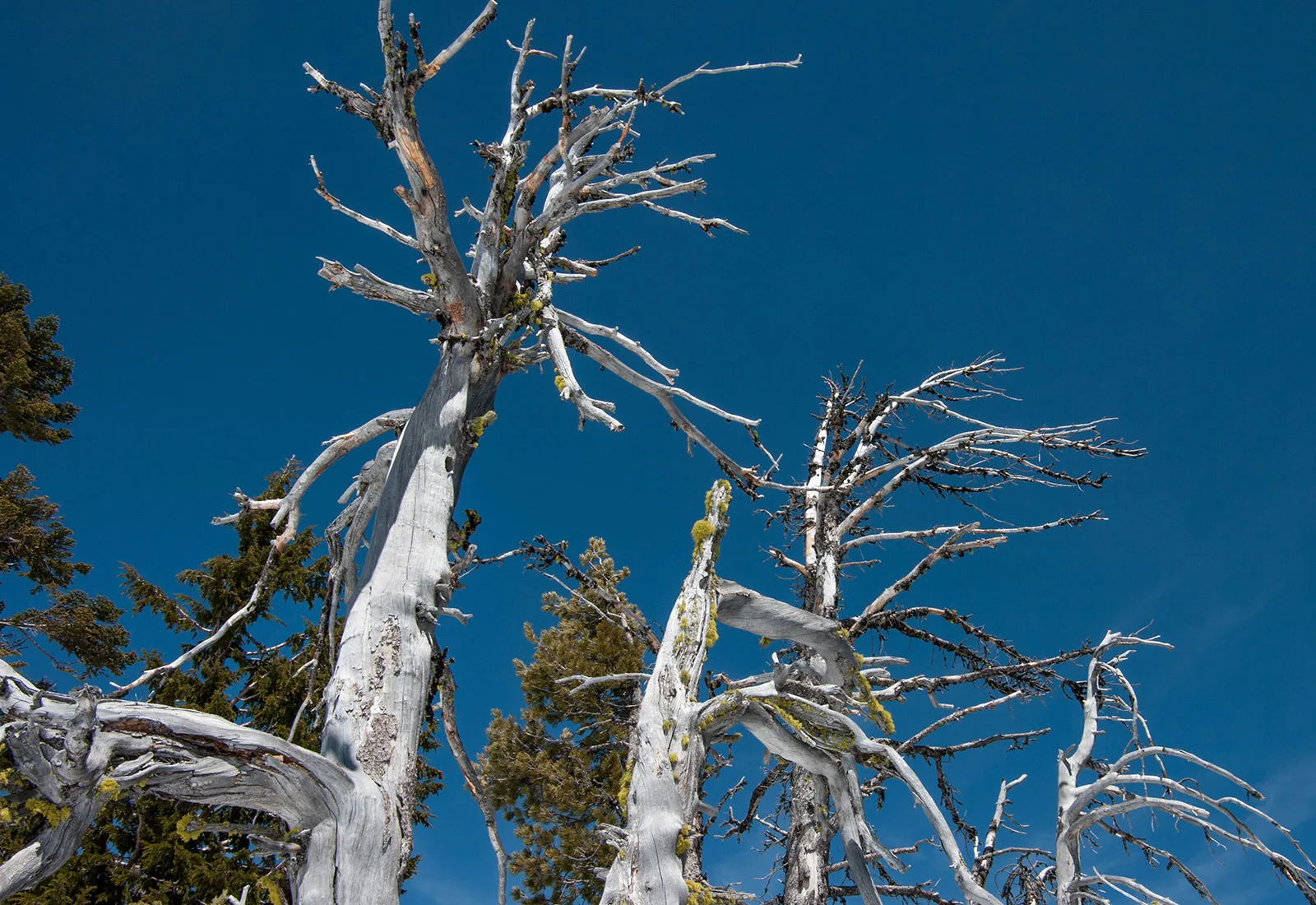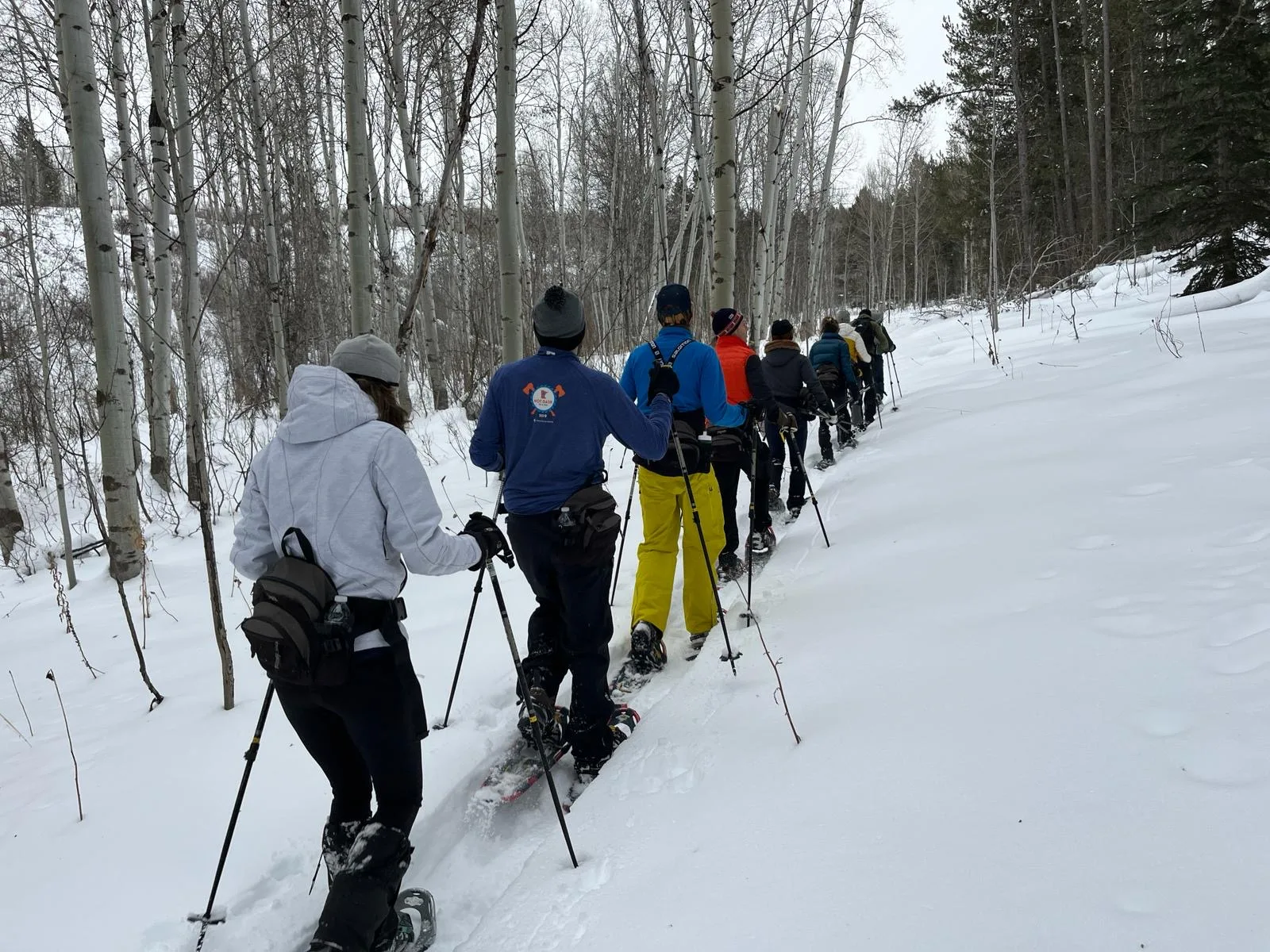LOCAL

Happy Fluffy February from The Hole Hiking Experience!
It has been a low snow year here in Jackson Hole, although stunningly beautiful as always. The month began at 76% of average snowfall. Annual snowfall measured at Jackson Hole Mountain Resort is typically 400 inches at 9,400 feet. Reaching average snowfall is very important because most of our annual moisture comes during the winter months. Historically, February is a snowy month and more snow is predicted for the next few days. Temperatures have been warmer than usual which does make life easier for wildlife.
It’s mating season for canines and bonded ravens are tidying their nests in anticipation of mating season. I find great joy observing the winter birds in Jackson Hole. It’s a burst of wild nature when they visit. I received a heated birdbath as a gift from my mom at Christmas which is great fun to observe. My usual backyard visitors would be both types of Chickadees (Mountain and Black-capped), House Sparrows, Red-breasted Nuthatches, Magpies, Eurasian Doves, and the occasional Northern Flicker.
Seeing Bald Eagles during the winter is always a highlight. Their summer diet is mainly trout but during the winter months they depend heavily on carrion. Keep an eye out for the majestic birds perched atop power poles along Highway 22. Exploring the Snake River corridor is a fun outing in the winter and you may spot one of my favorite birds, the Belted Kingfisher. Flat Creek wanders through town and Trumpeter Swans can be seen soaring to open water. Check out the link below for a list of common winter birds. Have fun exploring.
Lean more: Winter Backyard Birds of Jackson Hole
Enjoy!

Cathy Shill
Founder, The Hole Hiking Experience
REGIONAL

How to Save the Whitebark Pine
Whitepark Pine grows in the northern Rocky Mountains and the Pacific Northwest and is a keystone species in the subalpine zone of the west. It has a nutritious seed that provides food for birds, small mammals, and black and grizzly bears. The survival of the trees reflects the health of the Greater Yellowstone Ecosystem. The species is now listed as endangered. Balance in nature is important so decisions should be made to preserve the trees and the health of the forest.
Learn more:
How to Save the Whitebark Pine
Jackson Hole Mountain Resort work will ‘adversely affect’ some 400 whitebark pine
SPIRIT

“Nature is always hinting at us.
It hints over and over again.
And suddenly we take the hint.”
— Robert Frost
Field Facts
- Both Bald and Golden Eagles can be found in Jackson Hole during the winter months.
- Bald Eagles develop the white head and tail feathers when they are about 5 years old.
- Never let animals lick your vehicle. It can make them sick and saliva spreads disease.
Backcountry Tips
- Both drier lint and cotton balls with vaseline will you help start a fire in the backcountry. Consider adding these to your backcountry pack to use with a couple fire sticks. Aluminum foil works well as a base.
- A black bear was recently caught on video at the Jackson Hole Mountain Resort in Teton Village. Seems the mild winter has at least one bruin active. Reminder to carry bear spray.
Trail Suggestions
As the snow deepens, it is fun to explore Shadow Mountain in the Gros Ventre Range. You can reach the winter parking area by following the Gros Ventre Road past Kelly. You can always ski up the road, explore the rolling terrain or snowshoe through the meadows as snow accumulates. You can’t beat the views on a sunny day and it is always a great area to look for wildlife. Remember to give them space and make sure to tell a friend where you are going. Enjoy!

Learn More in 2024!
Join a naturalist or biologist and discover the wonders of nature in Jackson Hole. All tours are customized and catered to you and your group.


